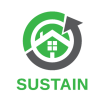EPBD: A New Era for Energy Efficient and Smart Ready Buildings in Europe

The European Directive (EU) 2024/1275, a recast of the Energy Performance of Buildings Directive (EPBD), marks a pivotal shift in the European construction market. Adopted in April 2024, this directive underscores the European Union’s commitment to improving the energy efficiency of buildings and advancing climate neutrality by 2050. Through this update, the EU aims to foster building renovations, encourage the integration of renewable energy solutions, and enhance the role of smart technologies to optimize building performance. As such, the directive is set to have far-reaching effects on developers, contractors, and material suppliers across the construction industry.
Key Objectives and Provisions
At the heart of the directive are several ambitious objectives. One of the most notable provisions is the requirement for zero-emission buildings. Beginning on January 1, 2030, all new buildings will be required to meet zero-emission standards. Public buildings must meet this criterion two years earlier, starting January 1, 2028. Zero-emission buildings are those with minimal energy demand, no on-site carbon emissions from fossil fuels, and either zero or a very low amount of operational greenhouse gas emissions.
The directive also places a significant emphasis on the renovation of existing buildings, particularly targeting the most energy-inefficient structures. To this end, Member States are mandated to establish national building renovation plans that aim to reduce the average primary energy use of residential buildings by 16% by 2030 and by 20-22% by 2035, compared to 2020 levels.
Renewable energy integration is another crucial aspect of the directive. To support the transition to clean energy, the directive encourages new buildings to be designed to accommodate renewable energy installations, such as photovoltaic (PV) panels and solar thermal systems, where technically feasible and economically viable.
A further key component of the directive is its focus on digitalization and automation. The directive promotes the integration of smart meters and energy management systems to help monitor and optimize energy consumption, improve efficiency, and ensure occupant comfort. A key tool in this regard is the Smart Readiness Indicator (SRI), which assesses a building’s capacity to integrate such smart technologies.
Financial incentives and support mechanisms are also integral to the directive. Member States are encouraged to provide financial assistance, particularly to energy-poor populations, to facilitate building renovations and improve energy efficiency.
Impact on the Building Sector
The directive’s implementation will have a profound impact on the building sector. Buildings currently account for about 40% of the EU’s energy consumption, and the directive seeks to significantly reduce this figure by setting higher energy performance standards. By improving energy efficiency and promoting renewable energy integration, the directive aims to lower greenhouse gas emissions from buildings, supporting the EU’s broader climate goals.
Moreover, the emphasis on building renovations and renewable energy technologies is expected to create new job opportunities, stimulating economic activity within both the construction and renewable energy sectors.
Implementation and Compliance
To ensure the directive’s goals are met, Member States must transpose the directive into national law by mid-2026. This will involve developing comprehensive strategies and national building renovation plans, which will help track progress and ensure compliance with the directive’s objectives.
In conclusion, the European Directive (EU) 2024/1275 is a clear indication of the EU’s determination to transform its building sector into a more energy-efficient and sustainable part of the economy. While the directive introduces both challenges and opportunities, it ultimately contributes to the overarching goal of climate neutrality by 2050.
